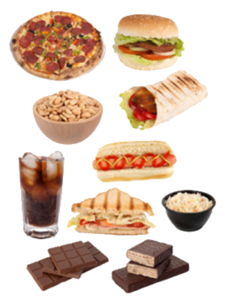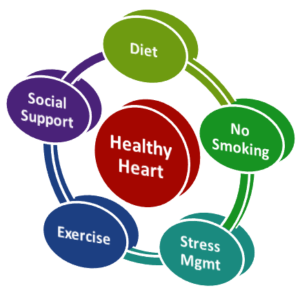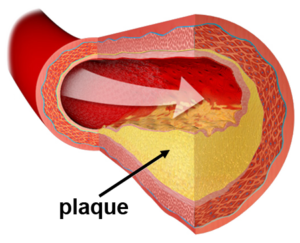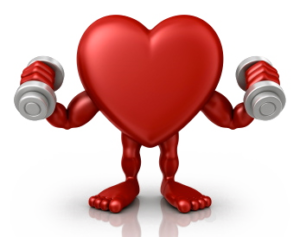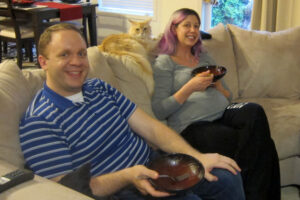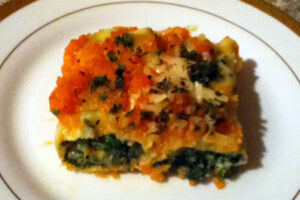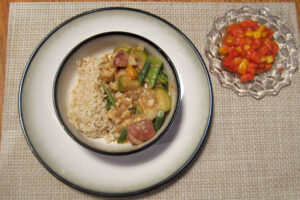Most of us can recite the reasons why exercise is good for our bodies. Aerobic exercise strengthens our cardiovascular system and raises our metabolic rates. An elevated metabolism burns more calories which helps us maintain a healthy weight. Load-bearing exercise (a.k.a. “pumping iron”) builds muscles and strengthens bones. And a daily dose of vigorous exercise can help us sleep better at night. In SPARK: The Revolutionary New Science of Exercise and the Brain, Dr. John J. Ratey, MD gives us yet another reason to move. Exercise gets our brains to function at peak efficiency.
 Two innovative school districts served as “demonstration plots” for the mind-body connection in active fitness programs. Teachers reported that when students in the Naperville IL or Titusville PA school districts completed a mile run:
Two innovative school districts served as “demonstration plots” for the mind-body connection in active fitness programs. Teachers reported that when students in the Naperville IL or Titusville PA school districts completed a mile run:
- They went to class alert, focused, and ready to learn.
- They were less fidgety, tense, and moody.
- They felt more motivated and invigorated.
- They outperformed peers who did not participate in a fitness regimen.
The last point merits special attention. Naperville’s District 203 students placed among the highest echelons of students academically in the U.S. and abroad. Some dismissed these results given Naperville’s favorable socioeconomic standing (although District 203 compared favorably to schools with comparable demographics). Titusville serves an underprivileged population. Their students went from below average performance statewide to 17% above average in reading and 18% above average in math. Moreover, they experienced a near absence of fist fights. Both districts also reported very low rates of childhood obesity.
For the record, Physical Education (PE) at Naperville and Titusville isn’t the “stand around and wait your turn to bat a ball” kind of fitness. Nor is it a one-size-fits-all program. Kids are encouraged to find an activity they enjoy with the right level of effort to elevate their heart rates to their target zones. If kids like wall climbing, they climb walls (and enjoy their classmates’ cheers and encouragement while doing it). If they’re slow runners but manage to get their heart rates up, they’ll receive praise for working at their own paces.
The other end of the age spectrum also provides “demonstration plots.” Among elderly populations, those who are educated, confident in their ability to effect positive change (a.k.a. “self-efficacious”), and exercised exhibit the least cognition decline.
From this launching pad, Dr. Ratey’s book dives into the neuroscience behind the beneficial impact of exercise. Here’s a high-level summary:
- Exercise elevates neurotransmitters (serotonin, norepinephrine, and dopamine) responsible for attention, perception, motivation, arousal, and mood.
- Exercise elevates brain derived neurotropic factors (BDNF) that build and maintain brain circuitry. It strengthens our cellular machinery for learning.
- Cells sprouted during exercise increase the attraction between neurons and their likelihood to “spark” (a.k.a., long term potentiation or LTP).
- The most effective form of aerobic exercise calls upon the brain to acquire skills while we move. For example, partner dancing forces the brain to take another person into account. Aerobic classes that change up the patterns of movements also encourage “skill” development.
- The mild stress of exercise activates genes that produce proteins to protect our brain cells against damage and disease.
- The heart muscle secrets ANP during exercise which travels through the blood-brain barrier to create a calming effect. It’s an antidote for anxiety and panic attacks.
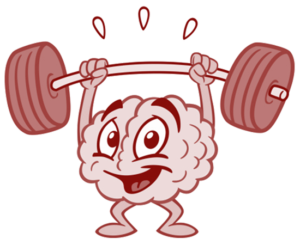 While exercise and medication are both effective at treating depression, consistent exercise works better over the long run. In fact, a Duke University study found that every 50-minute installment of weekly exercise reduces the odds of being depressed by 50%.
While exercise and medication are both effective at treating depression, consistent exercise works better over the long run. In fact, a Duke University study found that every 50-minute installment of weekly exercise reduces the odds of being depressed by 50%.- Exercise tricks the brain into maintaining itself for survival despite the hormonal cues that it is aging.
Dr. Ratey’s anti-aging prescription for exercise: 60 minutes of aerobic exercise at least 4x per week; strength training at least 2x per week to build strong bones and ward off osteoporosis; and, 30 minutes of flexibility and balance exercise 2x per week. It may seem rather daunting, but your body and your brain will love you for it!


